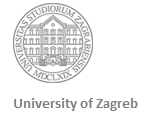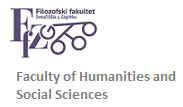Course title: Introduction to the Linguistic Study of English
Course coordinator: Assoc. Prof. Mateusz-Milan Stanojević
Instructors: Asst. Prof. Marina Grubišić
ECTS credits: 6
Language: English
Semester: 1st (winter)
Status: Compulsory
Form of Instruction: 4 lectures per week
Prerequisites: none
Examination: Written
Course contents: This elementary course covers the basic topics in general linguistics and selected issues in the linguistic description of the English language. Language is defined on the basis of its unique properties, and the foundations of the structuralist description of language are dealt with, including synchrony and diachrony, prescriptivism and descriptivism, language and speech, the linguistic sign and its properties, double articulation and syntagmatic and paradigmatic relations. The central part of the course deals with core linguistic disciplines: phonology, morphology, syntax, semantics, pragmatics. They are described synchronically, and the description includes theoretical issues with English examples. The description is based on a range of theories, including structuralism, generative linguistics (in syntax) and functionalism (in semantics and pragmatics). The last topic in this part of the course is the history of the language, which explains historical changes on all levels of linguistic analysis, with examples based on the history of English. The last part of the course tackles multidisciplinary approaches to language, describing ways in which contemporary linguistics sees the relationship between language and society (sociolinguistics), language and culture (anthropological linguistics), language and mind (psycholinguistics) and, finally, language acquisition and teaching.
Objectives: The objectives of this course are threefold. Firstly, students will acquire basic theoretical competences. Secondly, students will become familiar with the synchronic and diachronic descriptions of English given by various theories. This will serve as the basis for other linguistic courses in the program, and will enable the students to compare and contrast the approaches. Finally, the compulsory and extra-credit assignments will enable students to acquire some basic linguistic research skills, which will prepare them to do more detailed linguistic research in other specialized linguistic courses.
| Week | Topic | Notes |
| 1 | Introduction | Orientation, syllabus |
| Introduction | Scientific study of language. Levels of linguistic study. | |
| 2 | Articulatory phonetics | The sounds of English in comparison with the sounds of Croatian – a review of familiar notions. Articulatory description of sounds. Notation of sounds – transcription. The vocal tract and the ways of making sounds.(Ch. 4. in Yule (2006) |
| The sounds of English | Using the vocal tract to produce the sounds of English. Articulatory description of consonants, vowels and diphthongs. Some basic contrasts with Croatian. (Ch. 4 in Yule (2006)) | |
| 3 | Suprasegmentals. Acoustic and auditory phonetics. | Suprasegmentals: stress, tone, intonation and their importance in meaning. Basic contrasts with Croatian. Measurement of sound waves and sound perception: examples of studies, their results and their significance. |
| The sound pattern of a language. | Phonology: the organization of sounds. Basic terms: phonemes, allophones, minimal pairs, phonotactics. Phonological alternations in English (and some basic contrasts with Croatian). (Ch 5 in Yule (2006); Ch. 1 in Fasold & Connor Linton (2006)). Additional reading: chapter 3 from Josipović (1999). | |
| 4 | Constructing words in a language | Examples of the way words are constructed in English. Basic contrasts with Croatian. Phonotactic, semantic and functional limitations to making new words vs. acceptable innovations. How words become conventionalized. Why words – psychological reality vs. definitional problems. Morphemes. |
| Morphological operations. Derivation and inflection | Morphemes, types of morphemes. Allomorphs. Ch. 7 in Yule (2006). Basic morphological operations: affixation, reduplication, ablaut and suppletion. Definitions of derivation and inflection. Examples. Ch. 3. in Fasold & Connor Linton (2006)). | |
| 5 | Derivation and inflection | Types of derivation. Types of inflection. The significance of inflection and derivation in English and Croatian. Examples and exercises. |
| Combining units: phrases and sentences | The basis of word combinations: meaning and grammar. Word classes and their characteristics. Problems with defining word classes. Larger units: phrases clauses, sentences. Head and dependents. Syntax: definition. Morphology and syntax: grammar. Ch. 8 in Yule (2006). | |
| 6 | Syntax | The basis of word combinations – an overview of verbal and nominal grammatical categories. English vs. Croatian verbal categories: tense, aspect, mood, voice. (Selected terms from a glossary of linguistic terms). |
| Syntax | English vs. Croatian nominal categories: case, number, gender. Paradigmatic and syntagmatic relations in syntax. Syntactic functions vs. word classes. Exercises. Revision. Basics of generative grammar. Ch. 9 in Yule (2006). | |
| 7 | Continuous assessment 1 | |
| Continuous assessment 1 | Review. | |
| 8 | Semantics | The centrality of meaning in linguistic analysis. The study of meaning on all linguistic levels: phonology (contrastive; suprasegmentals & intonation) morphology (definitional), syntax (the meaning of word combinations, phrases and sentences). Two levels of meaning: individual units (lexical meaning) & their combinations (phrases, sentences). Conceptual and associative meaning. Lexical relations (synonymy, antonymy, homonymy (homophony), polysemy). |
| Semantics (cont.) | Lexical relations (hyponymy, prototypes; metonymy). Semantics of word combinations: simple addition or emergent meaning? Collocations, idioms. Semantic features, feature analysis, its problems. Semantic roles. Ch 10 in Yule (2006). Semantic studies – key interests. | |
| 9 | Pragmatics | Meaning in context: pragmatics. Various examples of contextual meaning differences: knowledge of the world and culture, inference. Deixis: person, time, space; what English and Croatian code. Speech acts (introduction, examples). |
| Pragmatics. Discourse analysis. | Speech acts (classification, felicity conditions). Pragmatic principles: cooperation, politeness. Interpreting discourse: cohesion & coherence, speech events, turn-taking, hedges, schemas and scripts. Chapters 11 & 12 in Yule (2006). | |
| 10 | Continuous assessment 2 | |
| Continuous assessment 2 | Review | |
| 11 | Language history and language variation: diachronic linguistics. | Synchrony vs. diachrony (revision). Family trees, family relationships, comparative reconstruction. Examples. |
| Language history and language variation (cont.) | Old English, Middle English, Modern English. The process of change, sound changes, syntactic changes, lexical changes. Ch. 17 in Yule (2006).Language variation: sociolinguisticsLectal varieties: geographical, social, educational distribution. Language continuum. Examples of varieties of English around the world. Examples of sociolinguistic research: methods, participants and results. Sociolinguistic interview. Ch. 18 & 19 in Yule (2006). | |
| Language and mind; language and culture. | Revision of material. Examples of exam questions. Exercises. Discussion of study questions. What is different in language structure (a review of examples). What is common to all languages: typology and universals. Beyond linguistic structure: the body and culture as a source of similarities / differences. Examples (the significance of body parts in various languages). Universality / relativity: the Sapir-Whorf hypothesis. Some more examples (colors, kinship terms). | |
| 13 | Continuous assessment 3 | |
| Continuous assessment 3 | Review |
Required reading:
– Yule, George (2006). The Study of Language. 3rd ed. Cambridge University Press
Additional reading:
– Fasold, Ralph W., and Connor-Linton, Jeff (eds.) (2006). An Introduction to Language and Linguistics. Cambridge University Press
– Josipović, Višnja (1999). Phonetics and Phonology for Students of English. Zagreb: Targa
– Lyons, John (1981). Language and Linguistics. An Introduction. Cambridge University Press



